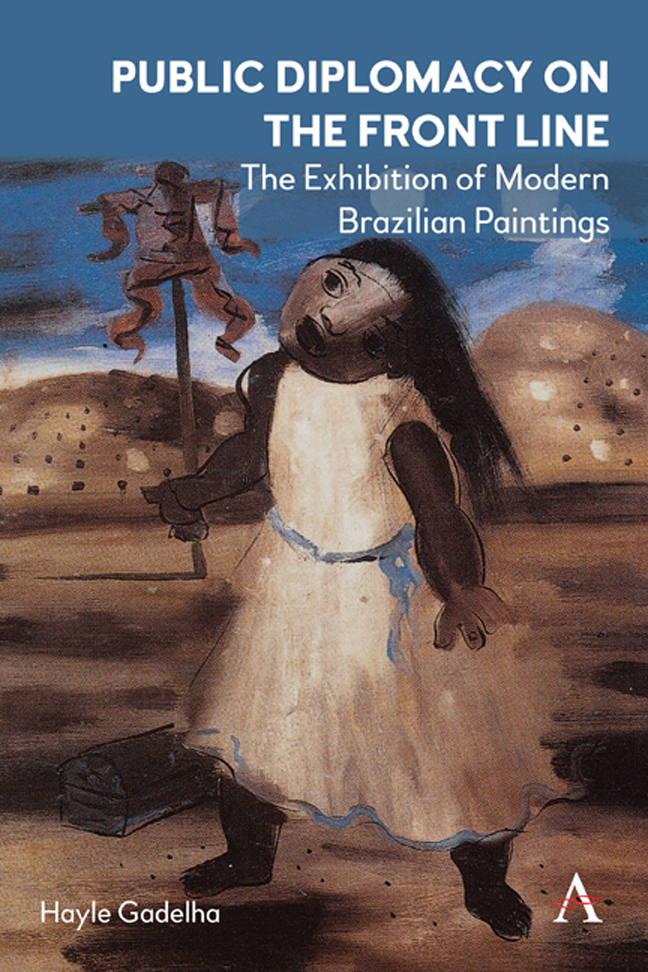Summary
In the midst of the Second World War (WW2), the Exhibition of Modern Brazilian Paintings left Rio de Janeiro, crossed the Atlantic Ocean and arrived in London. This Exhibition, as it will be called throughout this book, consisted of 168 artworks donated by seventy of the most recognised Brazilian Modernist painters, including Candido Portinari, Emiliano Di Cavalcanti, Lasar Segall and Tarsila do Amaral. The largest collection sent abroad until that time, and still today the most remarkable show of Brazilian art ever displayed in the United Kingdom, it toured the country between October 1944 and September 1945. It was displayed firstly at the Royal Academy of Arts (RAA) in London and subsequently at the Castle Museum (Norwich), National Gallery (Edinburgh), Kelvingrove Gallery (Glasgow), Victoria Gallery (Bath), Bristol Museum and Art Gallery, Whitechapel Gallery (London) and Reading Museum and Art Gallery, as detailed in Table 1. As a contribution to the Allied War effort, the funds from its sales were given to the Royal Air Force (RAF) Benevolent Fund, at that time an organisation greatly admired by Brazilians.
Despite its relevance, the Exhibition has long been erased from Brazil's diplomatic and art history. This book reconstructs this little-known wartime initiative and raises two main questions. Initially, it seeks to understand why this unprecedented – and unique to this day – endeavour was enthusiastically championed by the Brazilian Ministry of Foreign Affairs (MRE), precisely during a most complicated period of War. Secondly, it evaluates whether the Exhibition attained its goals, by studying its outcomes and shortcomings. By questioning what led the MRE to support the unlikely action, this book demonstrates that the Exhibition was a Public Diplomacy component of a wider foreign policy designed during wartime. It was shown that the Exhibition pertained to a broad diplomatic drive launched by Brazil during WW2, aimed at enhancing its prestige and international status in the wake of the global conflict. It may thus contribute not only to showcasing an unheard-of example of a successful and sophisticated Public Diplomacy initiative, but also to recover hints of a national legacy in a field scarcely studied in Brazilian historiography.
At a critical time of war, massive efforts were required to organise a largescale show of Brazilian Modern Art in the United Kingdom, and the virtual absence of historical records is stunning.
- Type
- Chapter
- Information
- Public Diplomacy on the Front LineThe Exhibition of Modern Brazilian Paintings, pp. 1 - 10Publisher: Anthem PressPrint publication year: 2023

